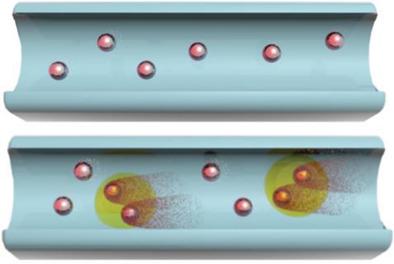当前位置:
X-MOL 学术
›
Adv. Mater. Interfaces
›
论文详情
Our official English website, www.x-mol.net, welcomes your
feedback! (Note: you will need to create a separate account there.)
MnO/Metal/Carbon Nanohybrid Lithium‐Ion Battery Anode With Enhanced Electrochemical Performance: Universal Facile Scalable Synthesis and Fundamental Understanding
Advanced Materials Interfaces ( IF 4.3 ) Pub Date : 2019-05-08 , DOI: 10.1002/admi.201900335 Xiaoyan Wang 1, 2 , Liujia Ma 1, 3 , Qing Ji 1, 4 , Jian‐Qiang Meng 3 , Suzhe Liang 1 , Zhuijun Xu 1, 2 , Meimei Wang 1 , Xiuxia Zuo 1 , Ying Xiao 1 , Jin Zhu 1 , Yonggao Xia 1 , Peter Müller‐Buschbaum 5, 6 , Ya‐Jun Cheng 1, 7
Advanced Materials Interfaces ( IF 4.3 ) Pub Date : 2019-05-08 , DOI: 10.1002/admi.201900335 Xiaoyan Wang 1, 2 , Liujia Ma 1, 3 , Qing Ji 1, 4 , Jian‐Qiang Meng 3 , Suzhe Liang 1 , Zhuijun Xu 1, 2 , Meimei Wang 1 , Xiuxia Zuo 1 , Ying Xiao 1 , Jin Zhu 1 , Yonggao Xia 1 , Peter Müller‐Buschbaum 5, 6 , Ya‐Jun Cheng 1, 7
Affiliation

|
MnO holds a great promise as an alternative lithium‐ion battery anode. It is crucial to improve the cyclic stability and rate capability of MnO‐based anodes. A facile scalable strategy to incorporate metal nanoparticles into the MnO/carbon anodes is developed as demonstrated by the MnO/Ag/C and MnO/Ni/C nanohybrids. Difunctional methacrylate monomers are used as solvent and carbon source, where the precursors of MnO and metal are homogeneously mixed at the molecular level and converted into a thermosetting polymer. MnO and metal nanoparticles are in situ formed and homogeneously embedded in the in situ formed carbon matrix after the carbonization process. The influence of the metal nanoparticles on the structure and properties of the MnO‐based anodes is systematically investigated. The mass composition of the MnO phase within the nanohybrid is controlled to be at a relatively low level, which is helpful for maintaining a good cyclic stability at the expense of the reversible capacities. However, the reversible capacities are increased by the incorporation of the metal nanoparticles due to enhanced electrochemical kinetics, where both excellent cyclic stability and rate performance are exhibited simultaneously. The mechanism responsible for the performance improvement is explored by electrochemical impedance spectroscopy, cyclic voltammetry, and temperature‐dependent resistivity measurements.
中文翻译:

具有增强的电化学性能的MnO /金属/碳纳米杂化锂离子电池阳极:通用的可扩展合成和基础知识
MnO有望作为锂离子电池的替代阳极。改善MnO基阳极的循环稳定性和倍率性能至关重要。如MnO / Ag / C和MnO / Ni / C纳米杂化物所证明的那样,已开发出一种将金属纳米粒子掺入MnO /碳阳极的简便可扩展策略。双官能甲基丙烯酸酯单体用作溶剂和碳源,其中MnO和金属的前体在分子水平上均匀混合并转化为热固性聚合物。碳化过程后,原位形成MnO和金属纳米颗粒,并均匀地嵌入原位形成的碳基质中。系统地研究了金属纳米颗粒对MnO基阳极的结构和性能的影响。将纳米混合物中的MnO相的质量组成控制在相对较低的水平,这有助于以可逆容量为代价保持良好的循环稳定性。然而,由于增强的电化学动力学,通过掺入金属纳米颗粒而增加了可逆容量,其中同时表现出优异的循环稳定性和速率性能。通过电化学阻抗谱,循环伏安法和与温度有关的电阻率测量,探索了导致性能改善的机理。由于增强的电化学动力学,通过掺入金属纳米颗粒而增加了可逆容量,其中同时显示出优异的循环稳定性和速率性能。通过电化学阻抗谱,循环伏安法和与温度有关的电阻率测量,探索了导致性能改善的机理。由于增强的电化学动力学,通过掺入金属纳米颗粒而增加了可逆容量,其中同时显示出优异的循环稳定性和速率性能。通过电化学阻抗谱,循环伏安法和与温度有关的电阻率测量,探索了导致性能改善的机理。
更新日期:2019-05-08
中文翻译:

具有增强的电化学性能的MnO /金属/碳纳米杂化锂离子电池阳极:通用的可扩展合成和基础知识
MnO有望作为锂离子电池的替代阳极。改善MnO基阳极的循环稳定性和倍率性能至关重要。如MnO / Ag / C和MnO / Ni / C纳米杂化物所证明的那样,已开发出一种将金属纳米粒子掺入MnO /碳阳极的简便可扩展策略。双官能甲基丙烯酸酯单体用作溶剂和碳源,其中MnO和金属的前体在分子水平上均匀混合并转化为热固性聚合物。碳化过程后,原位形成MnO和金属纳米颗粒,并均匀地嵌入原位形成的碳基质中。系统地研究了金属纳米颗粒对MnO基阳极的结构和性能的影响。将纳米混合物中的MnO相的质量组成控制在相对较低的水平,这有助于以可逆容量为代价保持良好的循环稳定性。然而,由于增强的电化学动力学,通过掺入金属纳米颗粒而增加了可逆容量,其中同时表现出优异的循环稳定性和速率性能。通过电化学阻抗谱,循环伏安法和与温度有关的电阻率测量,探索了导致性能改善的机理。由于增强的电化学动力学,通过掺入金属纳米颗粒而增加了可逆容量,其中同时显示出优异的循环稳定性和速率性能。通过电化学阻抗谱,循环伏安法和与温度有关的电阻率测量,探索了导致性能改善的机理。由于增强的电化学动力学,通过掺入金属纳米颗粒而增加了可逆容量,其中同时显示出优异的循环稳定性和速率性能。通过电化学阻抗谱,循环伏安法和与温度有关的电阻率测量,探索了导致性能改善的机理。











































 京公网安备 11010802027423号
京公网安备 11010802027423号